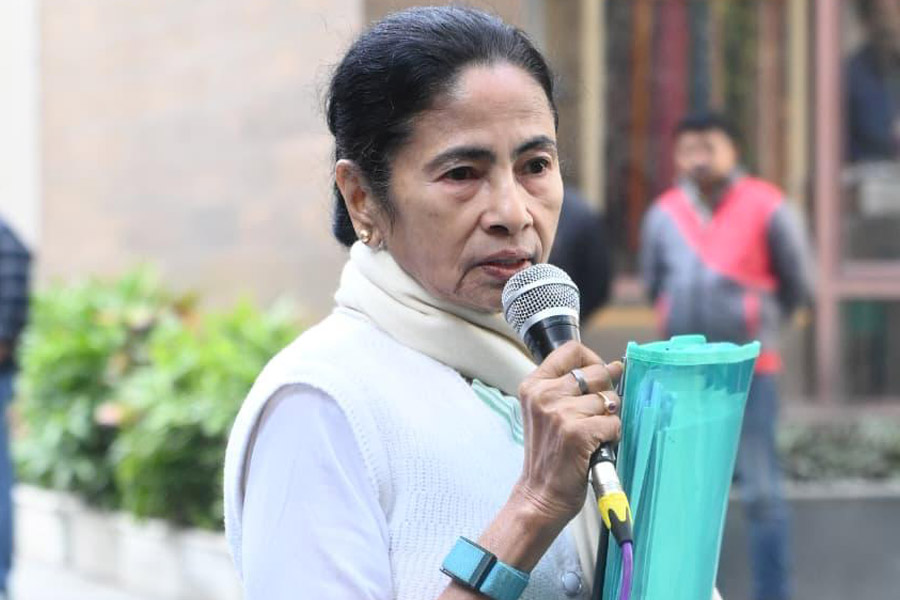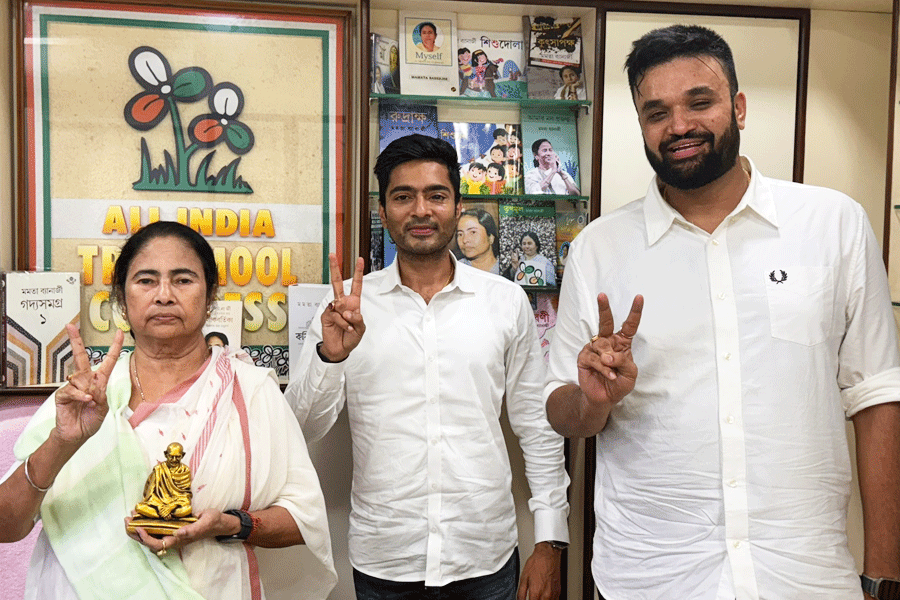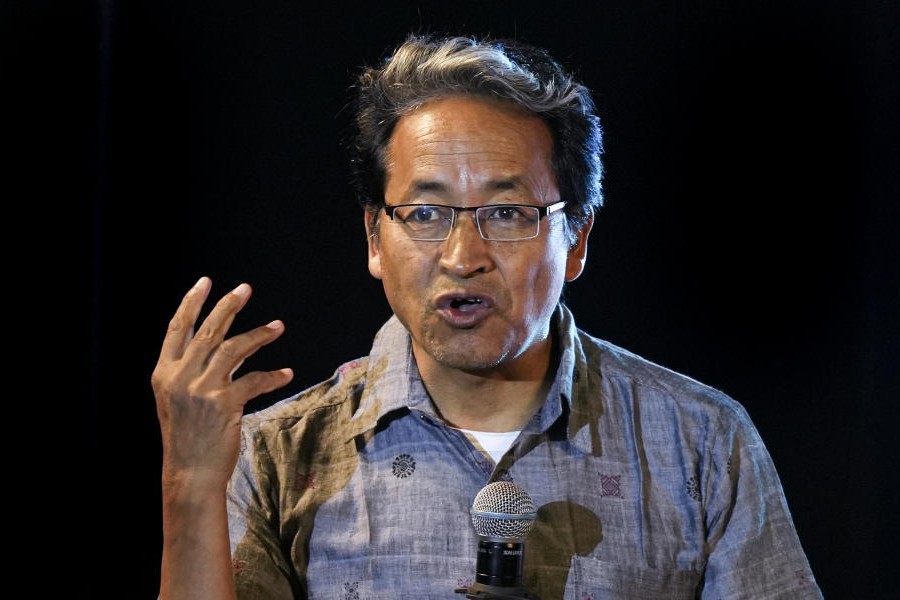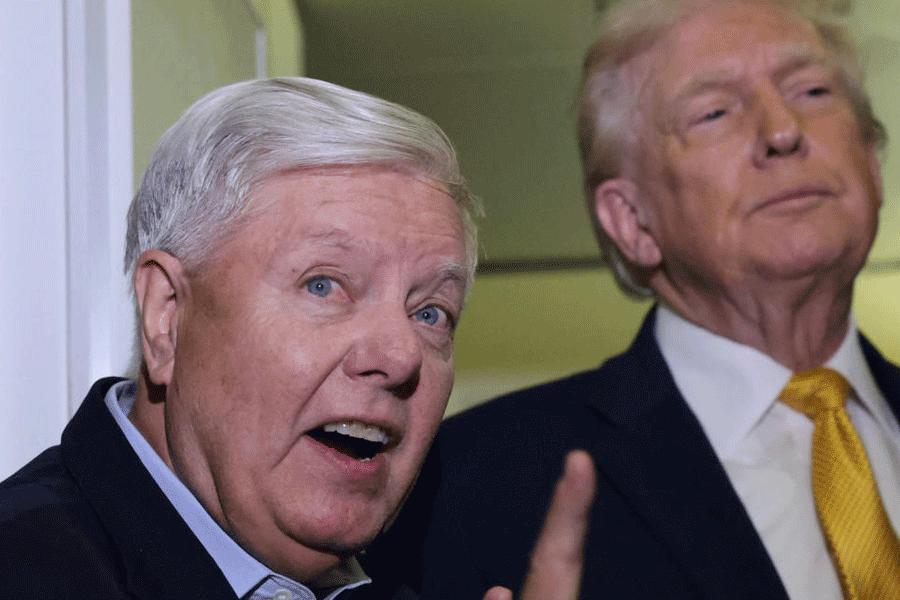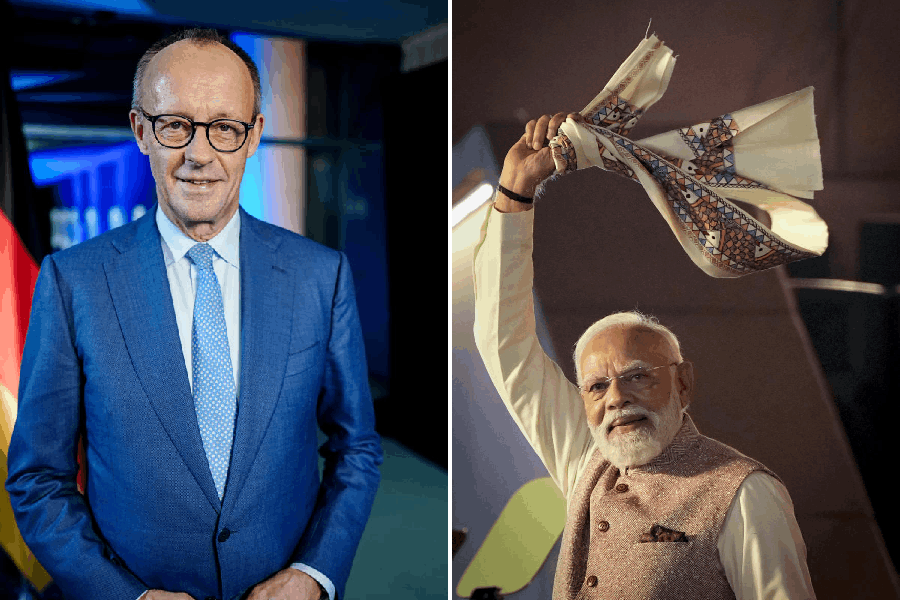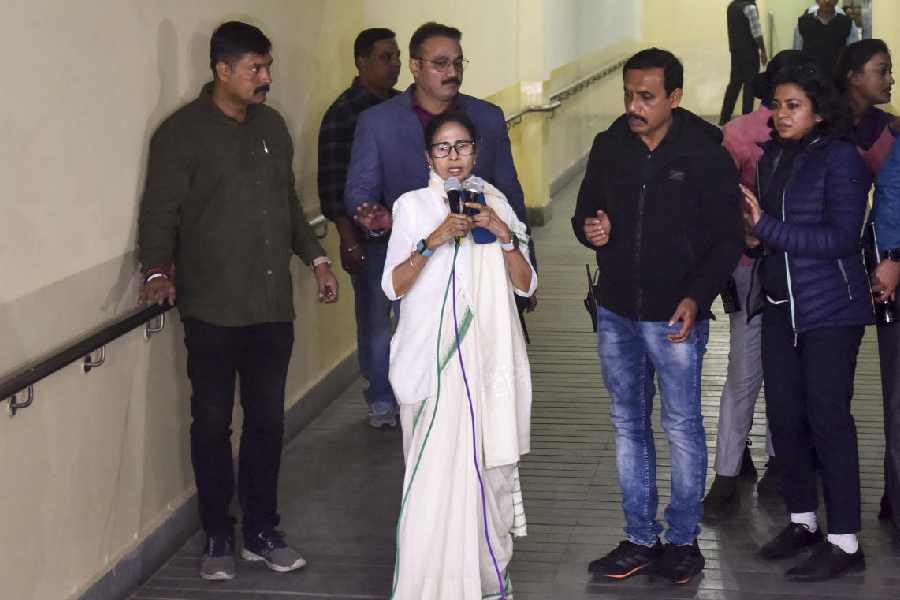 |
| Lalu Prasad and Bakul Dholakia, director of the Indian Institute of Management, Ahmedabad, after the railway minister’s arrival at the institution on Monday. (AP) |
Ahmedabad, Sept. 18: From a platform in the country’s premier B-school, Lalu Prasad today got himself another ticket to popularity when he endeared himself to a class of over 90 IIM students who heard him explain how the railways hit the turnaround track.
“The best thing about Lalu was that his lecture was so interesting that instead of two hours, it lasted three. It was not a class in the usual sense. He was full of humour, his comments were witty,” said Akshat Khare, one of those who fell for the minister’s rustic charm.
Another student, Rahul Rousan, said there was no radical or new lesson learnt, but it was certainly interesting to know how to apply the “operations” theory taught in IIMA classrooms to real-life situations and organisations.
Lalu Prasad handed back the compliment. “The talented IIMA students knew more about railways than many railway officials,” the minister said after the closed-door lecture, which was followed by an interaction with the media.
Professor G. Raghuram, who persuaded the minister to come to the institute and whose study on the railways’ revival is part of the post-graduate curriculum, put it down to Lalu Prasad’s “creative approach”.
“Obviously, Lalu lived up to expectations. He knew exactly what he was speaking. There were some evasive answers, but in general, he satisfied queries,” said Sriyukta Surendran, enrolled in the PG programme for executives.
Asked if the success story could be sustained after him, Lalu Prasad said: “It depends on the decision and vision of the leader of the day.”
Promising miracles, the minister projected a Rs 20,000 crore profit in this financial year, up from Rs 13,500 crore in 2005-06.
Lalu Prasad said he was “thankful” to the July 2001 Rakesh Mohan committee report that predicted “bankruptcy” for the railways. “It was because of him, after all, that we were able to take creative decisions.”
He scoffed at critics who he said lampooned him when he tried to bring about change. “Some people have been making fun of us. They have been saying ‘Lalu rail ko chopat kar dega’. But we have proved them wrong.”
Lalu Prasad rolled across the language barrier too, getting his message across in Hindi to the English-speaking corporate leaders of the future.
Talking about his dream of making Indian railways “world class”, the minister said IIMA would “play an important role in shaping” the vision. He announced setting up of a chair for infrastructure studies at the institute.
Central to Lalu Prasad’s plan are clean malls and better amenities for passengers — but also 7,500 outlets in stations across the country where local farmers can sell vegetables.
Asked why he could not turn around Bihar during his party’s 15-year rule, he said: “I was not allowed to work.” Later, he put the blame elsewhere. “Bihar has been completely neglected since Independence. It has not received substantial investment in any sector. This is the reason why it has not developed.”
Taking a swipe at former railway minister Nitish Kumar, who apparently sought to claim credit for the railways’ turnaround, Lalu Prasad said: “Nitish Kumar is a liar. I knew you would ask me this question, so I have brought with me a copy of his 1999 budget speech in which he had admitted that the railway was in doldrums,” he said, waving copies of the document.


